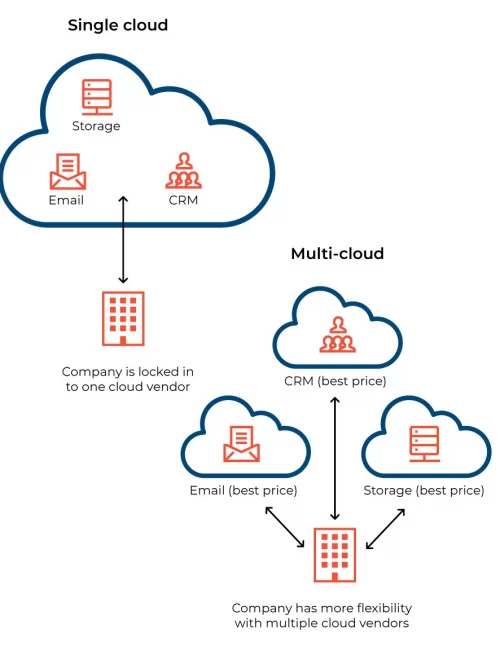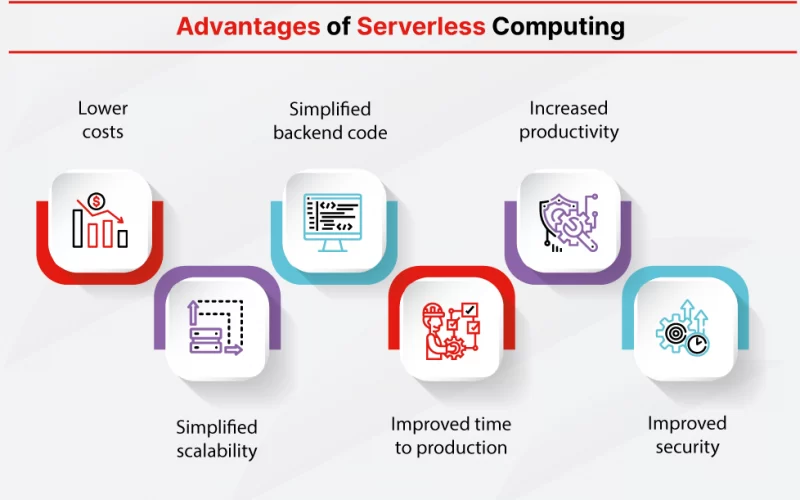
In recent years, cloud computing has seen a remarkable transformation, revolutionizing the way businesses work and create. As we go into the new year, it’s critical to stay current on the newest trends affecting this market. In this blog, we’ll look at the top five trends that will dominate 2023 and change the way businesses use the cloud.
We can anticipate that businesses will continue to use cloud services in 2023 to access cutting-edge technology and improve internal operations and processes.
We mentioned in our previous blog, What Separates Mobile And Cloud Computing From One Another?, that we will learn about some of the top trends. So, here is a list of some of the trends that we think will be most significant.
1. Multi-Cloud Computing Strategy:
The usage of multi-cloud methods is gaining traction in 2023. Organisations are realising the value of diversifying their cloud service providers in order to reduce risks, improve performance and save costs. Multi-cloud setups allow businesses to choose the finest services from various providers, avoiding vendor lock-in and boosting flexibility. This trend is pushing innovation in workload management and orchestration across various cloud computing platforms.

2. Edge Computing Integration:
Another popular trend this year is edge computing. Edge computing is developing a way to minimize latency and enhance data processing efficiency with the increasing expansion of Internet of Things (IoT) devices and applications demanding real-time processing. Cloud providers are increasingly delivering services that seamlessly integrate edge computing capabilities, allowing businesses to handle data closer to the source and improve overall system efficiency and responsiveness.

3. Serverless Computing Advancements:
Serverless computing is progressing past its early phases, with increased capabilities and acceptance rates. Organizations are increasingly relying on serverless architectures to focus on application development rather than underlying infrastructure management. By charging based on real consumption, the serverless model minimizes operational complexity, scales automatically, and helps optimise costs. Developers may expect even more flexibility and integration opportunities as serverless technologies grow.

4. AI and Machine Learning Integration:
Cloud computing services are increasingly incorporating artificial intelligence (AI) and machine learning (ML). Cloud companies are already offering AI/ML-specific services, allowing businesses to design, train, and deploy machine learning models without requiring substantial expertise. This trend enables companies to gain important insights from their data, automate complicated operations, and provide personalized customer experiences. The incorporation of artificial intelligence and machine learning into cloud computing platforms is hastening innovation across industries.

5. Enhanced Security in Cloud Computing:
Organizations shifting to the cloud, continue to prioritize security. In 2023, there will be a greater emphasis on improving cloud security using sophisticated encryption techniques, threat detection, and identity management technologies. To protect sensitive data, maintain compliance, and prevent breaches, cloud providers are investing in rigorous security measures. The cloud security landscape is evolving to secure data integrity and privacy as cyber threats continue to emerge.

Conclusion:
In sum, this landscape is always changing, and 2023 is no exception. The top five trends discussed above – multi-cloud strategies, edge computing integration, serverless computing advancements, AI/ML integration, and enhanced cloud security – are influencing how businesses use cloud services to drive innovation, improve efficiency, and achieve business goals. Staying on top of these trends will be critical for businesses looking to stay competitive and realize the full potential of cloud computing in the coming years.

